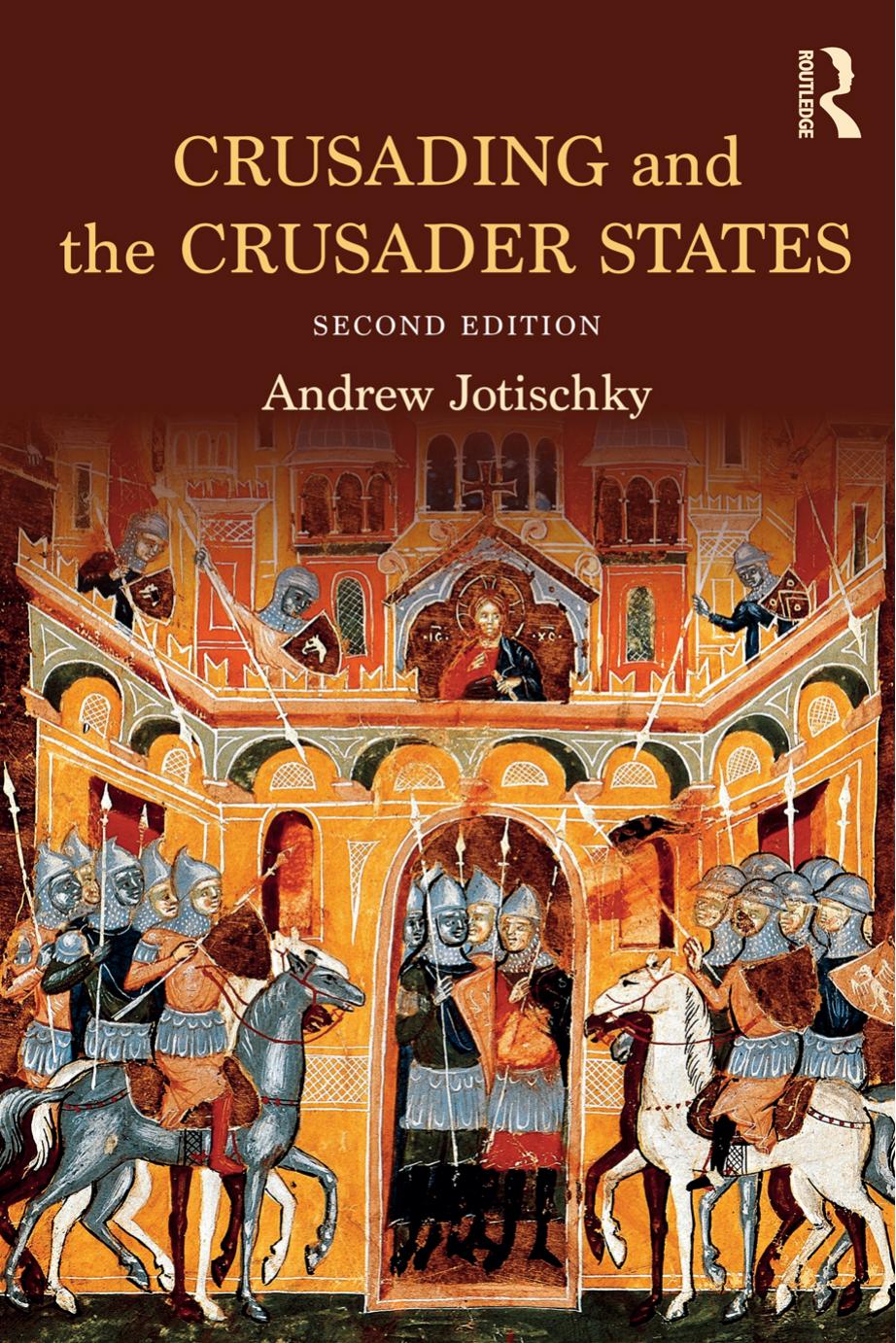Crusading and the Crusader States by Jotischky Andrew

Author:Jotischky, Andrew
Language: eng
Format: epub, mobi, pdf
Publisher: Taylor and Francis
Published: 2015-09-03T16:00:00+00:00
Art and architecture
Nowhere is Fulcher of Chartres’ picture of an assimilated society more realistic than in the area of visual culture. In the religious architecture and the decoration of shrine churches, in painting and manuscript production, the influence of indigenous artists increased throughout the twelfth and thirteenth centuries. Not only were local artists employed in workshops and scriptoria, but western artists borrowed Byzantine and indigenous methods and iconographical programmes, with the result that a distinctively hybrid artistic culture evolved in the Crusader States.
In the early years of the Crusader States this was not yet apparent. The earliest extant crusader church, in Tarsus, and the new church of St Anne in Jerusalem, built before 1110, echo the architectural forms of southern French Romanesque (Boase 1977: 73–4), and surviving fragments and reconstructed ground plans suggest that this remained the standard model for crusader ecclesiastical architecture. The Church of the Holy Sepulchre was a more complex site, however. Constantine’s churches of the Anastasis and Sepulchre, linked by a courtyard, were destroyed in 614 by the Persian invasion, and in 1009 al-Hakim, the Fatimid khalif, ordered the seventh-century rebuilding to be torn down. A Byzantine-sponsored rebuilding from 1048 onward produced a domed rotunda over the Sepulchre, with a polygonal apse extending to the east and housing the Anastasis church. The crusader rebuilding of the twelfth century was designed to house a greater complex of shrines in a single building. The site of the crucifixion occupied a chapel in the south transept, a new arch was cut from the rotunda to the Anastasis church, and chapels commemorating the events of the Passion radiated from the apse. Separate chapels commemorating Calvary and the Empress Helena’s miraculous discovery of the whole site opened off an ambulatory that encircled the apse. But the Franks also extended the conventual buildings, in order to house the Augustinian canons who served the church from 1114 onward. The style of this complicated church has been a matter of debate, but despite the retention of some elements of the eleventh-century Byzantine work, the basic models seem to have been northern French, Aquitainian or Provençal (Boase 1977: 78; Lyman 1992: 63-80), and the lay-out both of the architecture and the iconographic programmes corresponded to churches along the great pilgrimage routes of southern France and Spain (Folda 1995: 177-245).
The architectural sculpture, such as that in the column capitals of the south façade, bears comparison with classical Syrian models, though the surviving lintel relief, with its unique iconography of Passion Week, is purely western in influence – possibly Provençal, and in particular deriving from La Daurade in Toulouse (Barasch 1971: 107; but see Borg 1969: 25-40; Boase 1977: 82). Other sculpture from the Crusader States has similarly western origins. The extraordinary figural sculpture from the twelfth-century cathedral at Nazareth, for example, bears comparison with contemporary Burgundian work such as that at Vézelay, Autun and La Charité-sur-Loire, but there are also traces of southern influence (Barasch 1971: 109; Folda 1986: passim). Column capitals in the Temple Mound
Download
Crusading and the Crusader States by Jotischky Andrew.mobi
Crusading and the Crusader States by Jotischky Andrew.pdf
This site does not store any files on its server. We only index and link to content provided by other sites. Please contact the content providers to delete copyright contents if any and email us, we'll remove relevant links or contents immediately.
| Buddhism | Christianity |
| Ethnic & Tribal | General |
| Hinduism | Islam |
| Judaism | New Age, Mythology & Occult |
| Religion, Politics & State |
Cecilia; Or, Memoirs of an Heiress — Volume 1 by Fanny Burney(32434)
Cecilia; Or, Memoirs of an Heiress — Volume 2 by Fanny Burney(31869)
Cecilia; Or, Memoirs of an Heiress — Volume 3 by Fanny Burney(31852)
The Secret History by Donna Tartt(18843)
Sapiens: A Brief History of Humankind by Yuval Noah Harari(14248)
Leonardo da Vinci by Walter Isaacson(13179)
The Radium Girls by Kate Moore(11921)
Sapiens by Yuval Noah Harari(5293)
How Democracies Die by Steven Levitsky & Daniel Ziblatt(5127)
The Wind in My Hair by Masih Alinejad(5033)
Homo Deus: A Brief History of Tomorrow by Yuval Noah Harari(4822)
Endurance: Shackleton's Incredible Voyage by Alfred Lansing(4676)
The Silk Roads by Peter Frankopan(4456)
Man's Search for Meaning by Viktor Frankl(4420)
Millionaire: The Philanderer, Gambler, and Duelist Who Invented Modern Finance by Janet Gleeson(4374)
The Rape of Nanking by Iris Chang(4136)
Joan of Arc by Mary Gordon(4013)
The Motorcycle Diaries by Ernesto Che Guevara(4009)
Hitler in Los Angeles by Steven J. Ross(3900)
